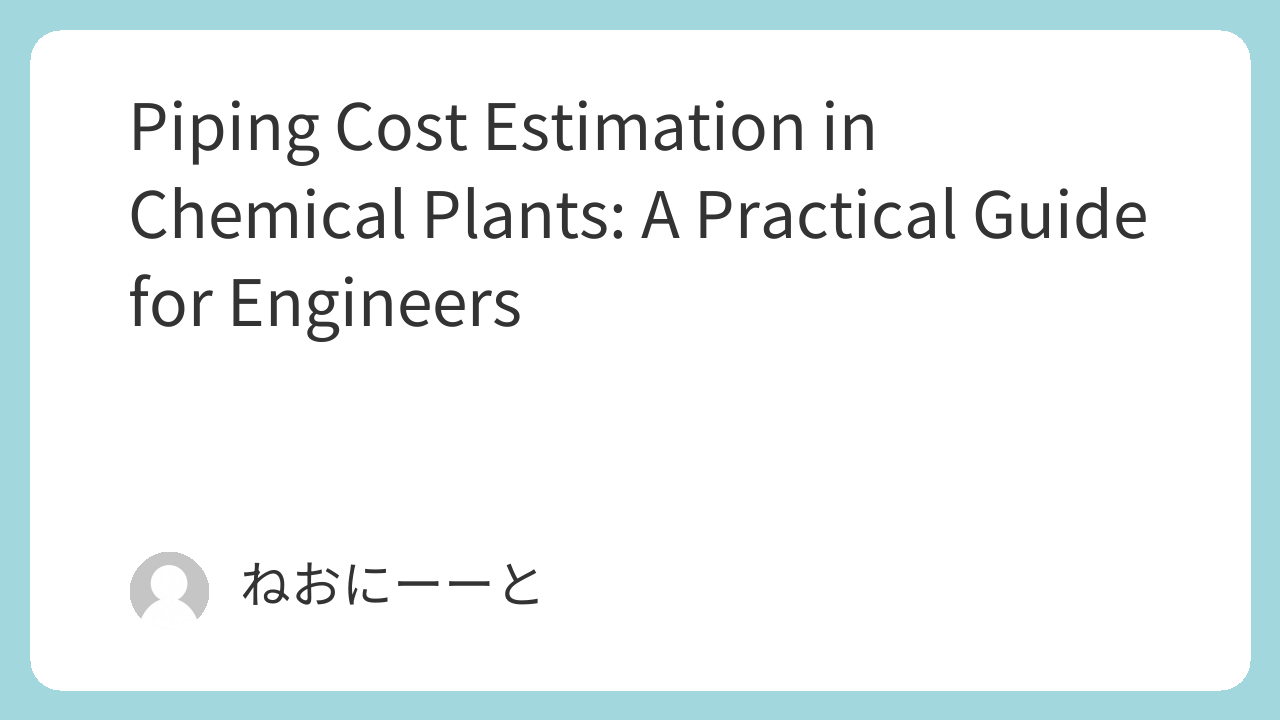Estimating piping costs is one of the most practical yet complex tasks in plant engineering.
It’s not just about quoting a price — a good estimate must reflect actual site conditions, construction complexity, and material choices.
This article explains how to estimate piping costs realistically, from detailed cost breakdowns to quick budget-level calculations.
Whether you’re an owner’s engineer, project manager, or just learning how plant estimates work, this guide will help you understand the logic behind every number.
1. Understanding the Structure of a Piping Estimate
A typical piping cost estimate has two major parts: materials and labor (installation).
The basic formula is simple:
Total Piping Cost = Material Cost + Installation Cost
But each part needs careful attention.
Material cost depends on specs, while installation cost varies depending on welding difficulty, working space, and even weather.
2. Material Cost Estimation
To estimate materials, list every component that makes up the line:
- Pipe (length × unit price)
- Elbows
- Flanges
- Bolts and nuts
- Gaskets
Each is priced per quantity and summed up.
Even in small sections, accurate material take-offs are critical for reliable budgeting.
3. Labor Cost Estimation
Labor costs are often based on “work units” (DB) — the time required to weld and assemble each part.
Example formula:
Installation Cost = Welding Work Units × Material Factor × Environment Factor × Unit Rate
- Material Factor: Stainless steel may take 10–20% longer than carbon steel.
- Environment Factor: Tight spaces, high places, or indoor work can increase labor time.
Real-world estimation relies on accumulated experience — databases of past work are invaluable.
4. Rough (Budgetary) Estimation
When you don’t have time for detailed take-offs, use simplified methods based on known data.
For example:
If a 40A carbon steel pipe costs $560 per meter,
then 25A can be estimated using the 0.6 power rule:
560 × (25 / 40)^0.6 ≈ $420/m
You can also round these into practical “rules of thumb” like:
Piping cost ≈ 1,400 × nominal diameter (in mm)
Such shortcuts are essential in the early budgeting phase.
5. Beyond Piping — The Lang Factor
For very early conceptual estimates, detailed piping breakdowns aren’t practical.
Instead, engineers use Lang Factors, which estimate the total plant cost as a multiple of equipment cost.
Typical factors:
- Glass-lined reactors → higher (complex installations)
- Outdoor tanks → lower (simpler layouts)
Lang Factors are rough but useful when you just need a quick investment figure.
Conclusion
Piping cost estimation isn’t only about math — it’s about understanding the plant.
A good estimator combines technical knowledge, field experience, and data-driven judgment.
By learning how to balance detail with efficiency, you can produce reliable estimates quickly and confidently — saving both time and budget headaches later.

Comments